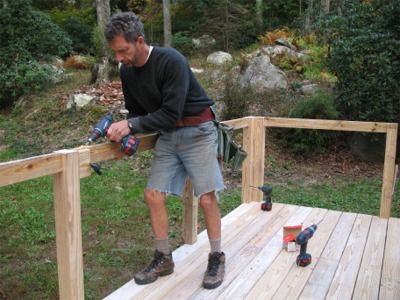
Just as there’s no prescriptive guardrail post to deck frame detail in the IRC 2009, there is no design for the guardrail itself or guard infill. The AFPA’s DCA-6 (see ‘Free Deck Construction Guide’ blog) offers a basic design that building officials should recognize as code compliant. To finish out the deck guardrail system shown in ‘Start Your Railing Right’, I took a different approach that I cleared with my local building official before installing.
First, I spaced the posts approximately 4 ft apart (the DCA-6 permits a maximum of 6 ft post spacing). I pocket screwed 2×4 top rail sections between each pair of posts using 5 in. Fasten Master LedgerLok screws (see photos). Then over the top of the posts and rail, I screwed 16 ft. lengths of 5/4 in. X 6 in. decking. The ‘T’ formed by the 2×4 and decking makes a strong, rigid guardrail.
I wanted a more open appearance than using balusters without the expense of stainless steel cable or glass. After some brainstorming and research I settled on nylon netting – essentially heavy duty soccer net (see photos). The net strength far exceeds IRC railing infill requirement of 50 lbs. ordinary load applied to a one square foot area. Even after applying a safety factor of 2.5 for a tested assembly (125 lbs) the netting specs had plenty of strength to spare. The individual net cord is rated at 600 lb break strength and can withstand 1325 lbs / sq ft.
Net fabricators custom cut netting and reinforce the perimeter with polypropylene rope. I ordered the individual nets 1 in. narrower than the distance between each post pair and 1 in. shorter than the decking to top rail space. I used stainless steel boat cable cleats to attach the net’s perimeter rope to the top rail and decking and middle of the posts. At the corners, I bored holes through each post and used extra lengths of rope to tie opposite nets to the posts.
You may cringe at the idea of using soccer netting as the guardrail infill system or you may want to try it on your own project. If you do choose to try it, check with your local building official first. I brought the net manufacturer’s strength information and a sample net to my local inspector’s office for his approval before placing the order.
Fine Homebuilding Recommended Products
Fine Homebuilding receives a commission for items purchased through links on this site, including Amazon Associates and other affiliate advertising programs.

Affordable IR Camera

Handy Heat Gun

Reliable Crimp Connectors
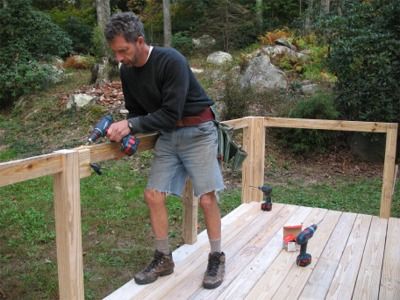
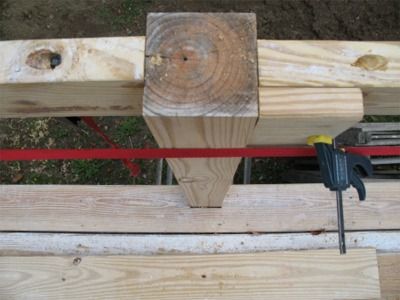
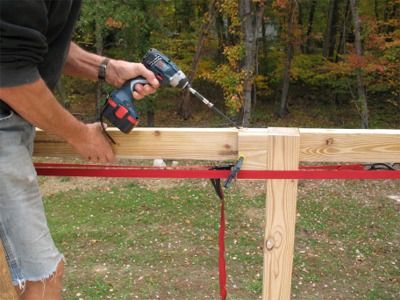
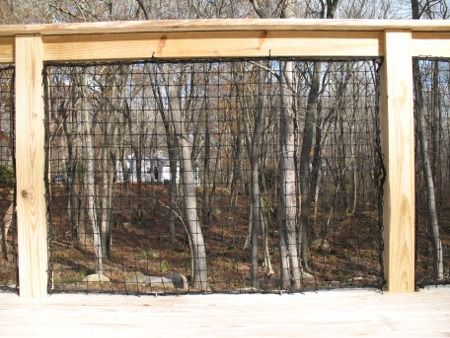
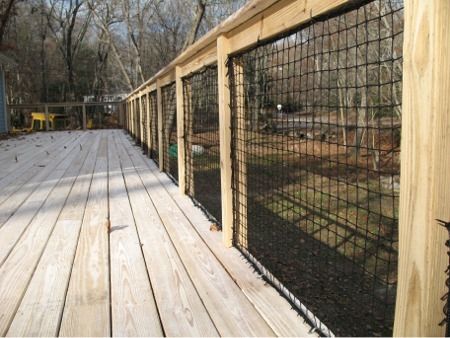
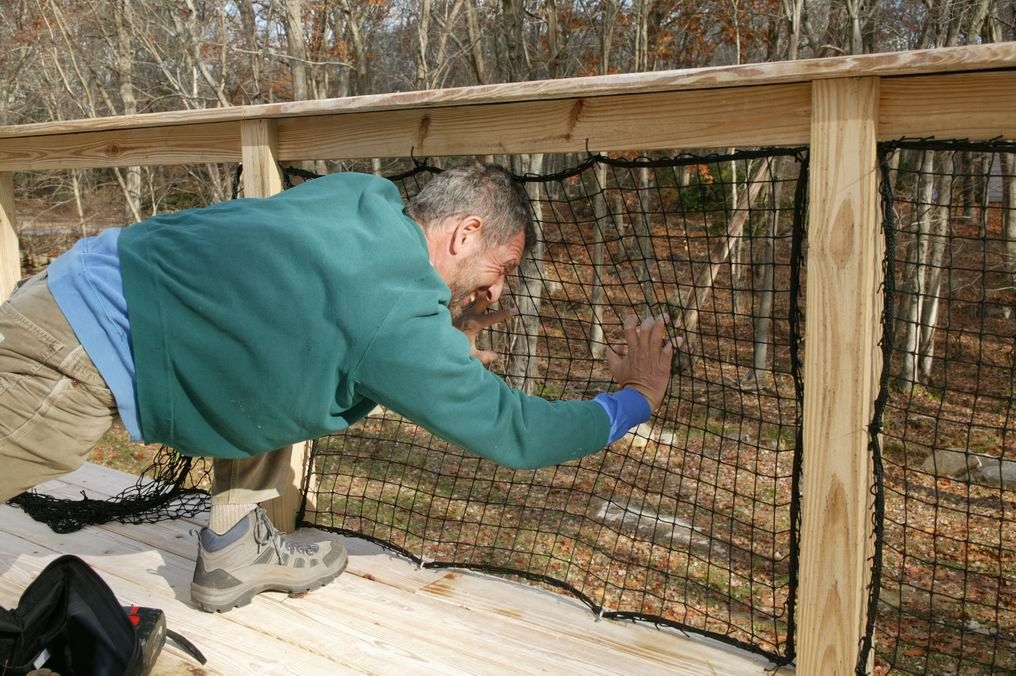
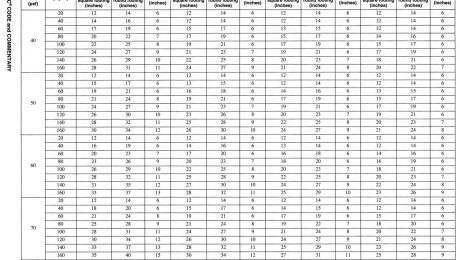
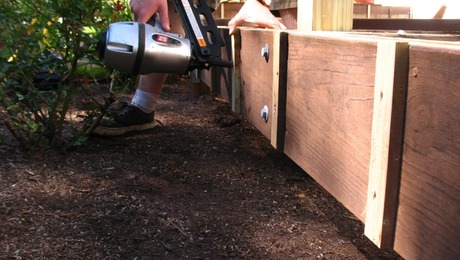
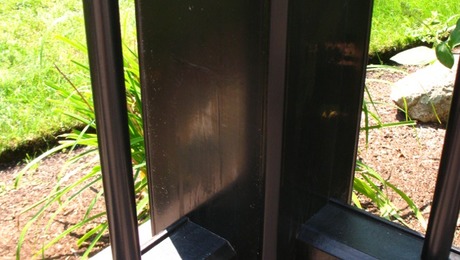
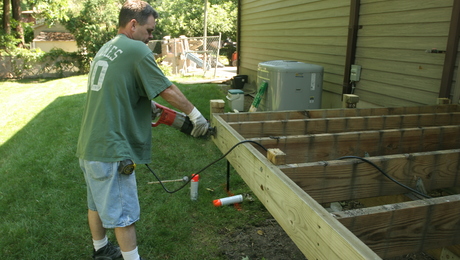























View Comments
I don't think that the netting looks too bad. I wonder if using fence staples would have been the way to fasten the netting to the rails, posts and deck, instead of the boat cleats and rope.
The netting looks fine and i appreciate the visibility advantage.
Couldn't a child climb it and fall a considerable distance?
Answering questions from Carpenter 183 and nuked:
I would be reluctant to use fence staples with the net configuration I used - inset between the posts/rail because under tension they would be subject to withdrawal. However, fence staples may work if the net were stapled to the inside face of the posts/rail. Your notion got me thinking that rather than ordering separate net for each post - post section, one long narrow net could be used with the net spanning across the inside faces of a series of posts.
As far as kids climbing - For a short time the IRC had a restriction on any horizontal guard infill I believe. In RI where I work, the state amended code prohibited horizontal infill for many years - the caution being horizontal infill turns the guard assembly into a 'jungle gym.' Of course cable railing system makers and designers who prefer horizontal batten infill couldn't sell their wares or designs . Now there's no code prohibitions against horizontal guard infill.
I feel kids will have a harder time climbing the net than other horizontal infill. The 1 3/4 in. pattern makes it hard for even tiny shoes to gain purchase into the net. And the flex of the net web really makes it challenging to hold onto the net as climbing. I tried climbing a nearby soccer goal with a similar net and couldn't manage. So I'm not worried but I would make sure any clients consider the possibility of budding rock climbers practicing on the net.
Mike
9.8.8.6. Design to Prevent Climbing
(See Appendix A.)
1) Guards required by Article 9.8.8.1., except those in industrial occupancies and where it can be shown that the location and size of openings do not represent a hazard, shall be designed so that no member, attachment or opening will facilitate climbing.
2) Guards shall be deemed to comply with Sentence (1) where any elements protruding from the vertical and located within the area between 140 mm and 900 mm above the floor or walking surface protected by the guard
a)are located more than 450 mm horizontally and vertically from each other,
b)provide not more than 15 mm horizontal offset,
c)do not provide a toe-space more than 45 mm horizontally and 20 mm vertically, or
d)present more than a 1-in-2 slope on the offset.
Clearly your soccer net guardrail would not meet British Columbia "Design to Prevent Climbing" Not sure, but I expect similar sentences in the Code accross Canada.
Blaeberry, The net just barely complies with subsection (c) of your code by 0.35 mm. The net squares are 1 3/4 in. wide which equals 44.45mm.
The code language is vastly different than what we have in the US so it's difficult to compare. Here the codes differentiate Guardrails from Guard infill. It looks like in BC they are grouped together.
Be careful about using any type of plastic netting for guarding in an outdoor environment. Sunlight can degrade several types of plastic over time, and the material could fail. Polypropylene should be avoided because it is easily degraded by UV light. Note that the webbing that holds a net together may be of a different type of plastic that the netting itself, so double check.